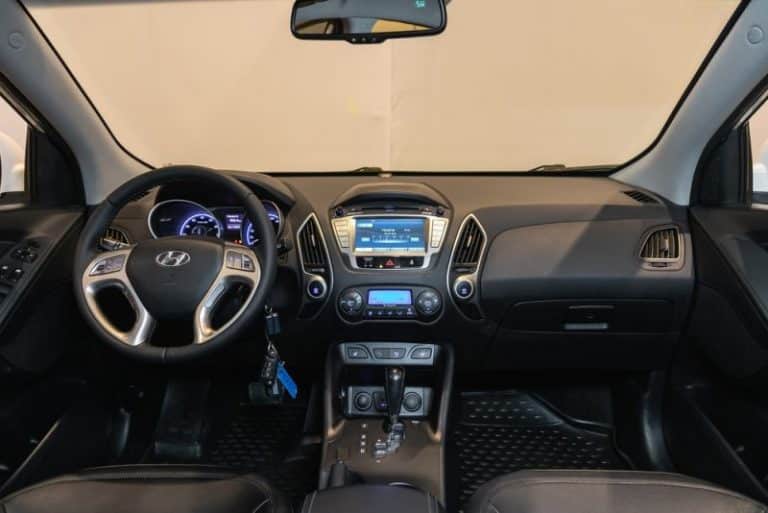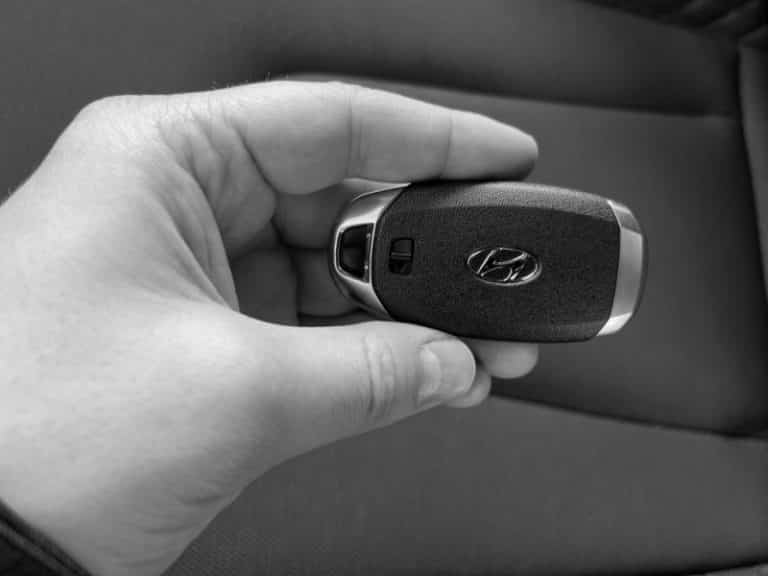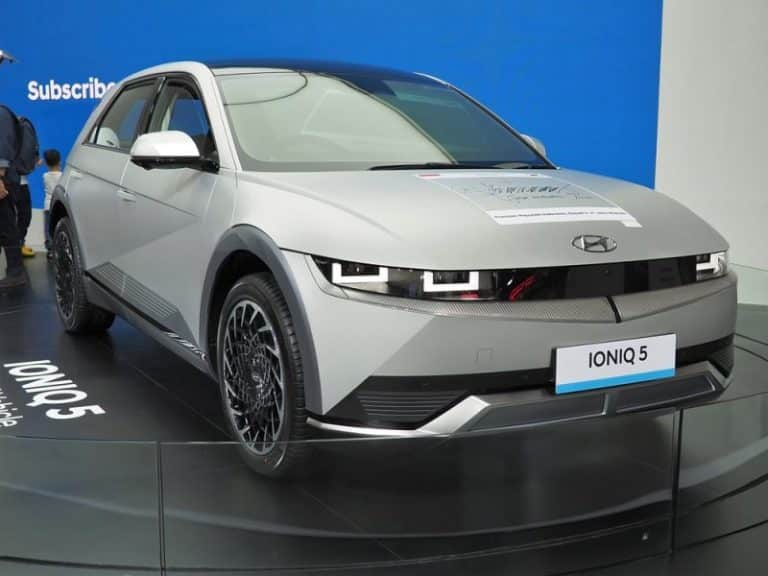Does Hyundai Ioniq Have A Catalytic Converter? (Let’s See)
Fuel engines all have many essential details in common; one of them is the burning of fuel and gas release.
So the automobile world introduced the catalytic converter to minimize the effect of these gases on our environment.
How sweet of us as humans.
However, Hyundai Ioniq is not just any average fuel engine; it has a robust hybrid engine. This type of engine makes it unique.
But does it have a catalytic converter like any other fuel engine?
Absolutely! Your Hyundai Ioniq hybrid does have a catalytic converter.It is a common feature of all fuel engines. Being hybrid, Hyundai has both an electric engine and a fuel engine as a power source. Hence, the need for a catalytic converter.
What is a Catalytic Converter?

There are many vital components in a typical vehicle. Some of these components are small and sometimes out of sight.
Some others are big, obvious, and critical. Safe to say, the catalytic converter falls under the latter category.
It is a long device that completes the exhaust unit of a fuel engine. It is usually long, metallic, and big.
Catalytic converters are not unique to cars; you find this feature on any equipment that burns fuel.
Generators, factory plants, and other fuel equipment as a power source all have catalytic converters as part of their system exhaust component.
This important unit is more than just a long pipe that helps deliver gases to the environment. It contains essential elements and has a unique function.
What Does a Catalytic Converter Do?
Catalytic converters are a part of all fuel engines, this you know. That means whatever it does, it has something to do with the working mechanism of fuel engines.
To understand what a catalytic converter does, let’s discuss the type of gases a fuel engine produces.
Fuel engines like those in your blue Ioniq hybrid emit hydrocarbons, carbon monoxide, and different nitrogen oxides. Unfortunately, these gases are not friendly to our environment.
They also directly impact the health of people inhaling this emission.
Well, the automobile had a simple answer to this particular problem. That is the catalytic converter.
The job is to convert these gaseous emissions to a safe form for the environment.
So in a car, there are engine emissions, and then there are tailpipe emissions.
The unsafe gases fall under the former, while the converted safe gases fall under the latter category.
How Does a Catalytic Converter Work?
A typical catalytic converter converts gases from an environmentally unsafe state to a more friendly version.
The working mechanism is a function of the elements found inside a catalytic converter.
Platinum, Rhodium, and Palladium are the three metals you will find in a catalytic converter.
These metals aid in the conversion of these gases. They serve as a catalyst.
There is no prize for guessing where the name catalytic converter originated. Some reactions do not readily occur, and the conversion of these gases is one of those reactions.
These catalysts do not partake in the conversion; they only create an environment that makes the process more achievable.
The procedure itself is an oxidation or reduction reaction. They are of two types. These include;
#1. Two-Way Converter
This type only converts the hydrocarbons (HC); this compound is the fuel that didn’t undergo complete combustion to safe water vapor (H2O).
It also alters the harmful carbon monoxide (CO) to simple carbon dioxide (CO2), the gases plants use for food.
It is a two-way converter because these are the only two reactions. Both reactions are oxidation reactions (addition of oxide).
This type is common with diesel and old fuel engines.
#2. Three-Way Converter
You can find this type in modern cars and the latest fuel engines. It does everything a two-way converter does and adds one more reaction.
The third conversion reduces nitrous (NO) to nitrogen (N). This reaction removes oxygen from the gaseous compound.
With this type of converter, you have both reduction and oxidation reactions. Nice!
A suitable condition for a converter to work optimally is about 752 °F. The high temperature needed for operation explains the location of the component.
It is often very close to the car’s engine.
Pros and Cons of Catalytic Converter?
Due to issues best known to the users, some vehicle users have considered removing the catalytic converter.
If you are in such a category, you must weigh the pros and cons of having a catalytic converter before making such decisions.
#1. Pros of Catalytic Converter
- The emissions from your vehicle remain friendly to the environment around you and the world in general.
- Your car can pass the emission test thanks to the catalytic converter
- A catalytic converter and the oxygen sensor help detect issues when your engine doesn’t burn fuel appropriately.
- It also reduces noise pollution.
#2. Cons of Catalytic Converter
- It puts backward pressure on the engine when converting the gases. This pressure reduces the fuel efficiency of such engines.
- It increases the heat coming from the engine due to its operation mode.
It is much better to stick to having this component on your vehicle. The good news is that the latest catalytic converter performance is better than older models.
This increase is thanks to newer designs and modes of operation. Thus, there is a reduction in how it affects the engine’s fuel efficiency.
Also Read: Can a Honda Run Without a Catalytic Converter?
How to Secure Your Catalytic Converter?
There is a need for you to secure your Hyundai Ioniq catalytic converter from theft. In the past decade, reports of stolen catalytic converters have become common news.
This increase is due to the rare and priceless elements in the device. So you have to be vigilant.
However, there are measures to ensure your car is safe from catalytic converter theft. You can try one or all of them.
#1. Reduced Access
The most secure way is to reduce people’s access to your car when in the park. You can do this by parking inside a locked garage at night or inside a secure private compound.
#2. Open Exposure
If you do not have a secure garage, or perhaps you have to park the car during the day, exposure can be a good thing.
Park your vehicle where there is much light at night to expose any intruder. Parking in open spaces during the day also deters theft.
#3. Protective Mechanism
You can take your car to a local garage shop to ensure total protection by making modifications. These modifications will add security and ensure the component is secured firmly to the car.
How Much is Catalytic Converter Replacement?

In unfortunate cases of theft, there is room for catalytic converter replacement. Understandably, due to a high number of thefts, there is an increase in demand for this car component.
Unfortunately, an increase in demand equals an increase in replacement cost.
Several factors affect the cost of this procedure. First, the car model determines the price of the converter.
The extent of damage incurred during the theft will decide if you will be buying more parts or not. All these factors affect labor costs.
The catalytic converter for Hyundai Ioniq is about $1200. The professional cost is between $100 and $150, depending on the level of damage.
Also Read: Do I Need A Heat Shield On My Catalytic Converter?
Conclusion
Your Hyundai Ioniq is environment friendly with safe emissions. Of course, you have the catalytic converter to thank for that.
However, securing your car and its components is necessary to prevent theft. Once you can do that to your automobile, you can continue to enjoy your iconic Hyundai Ioniq.






